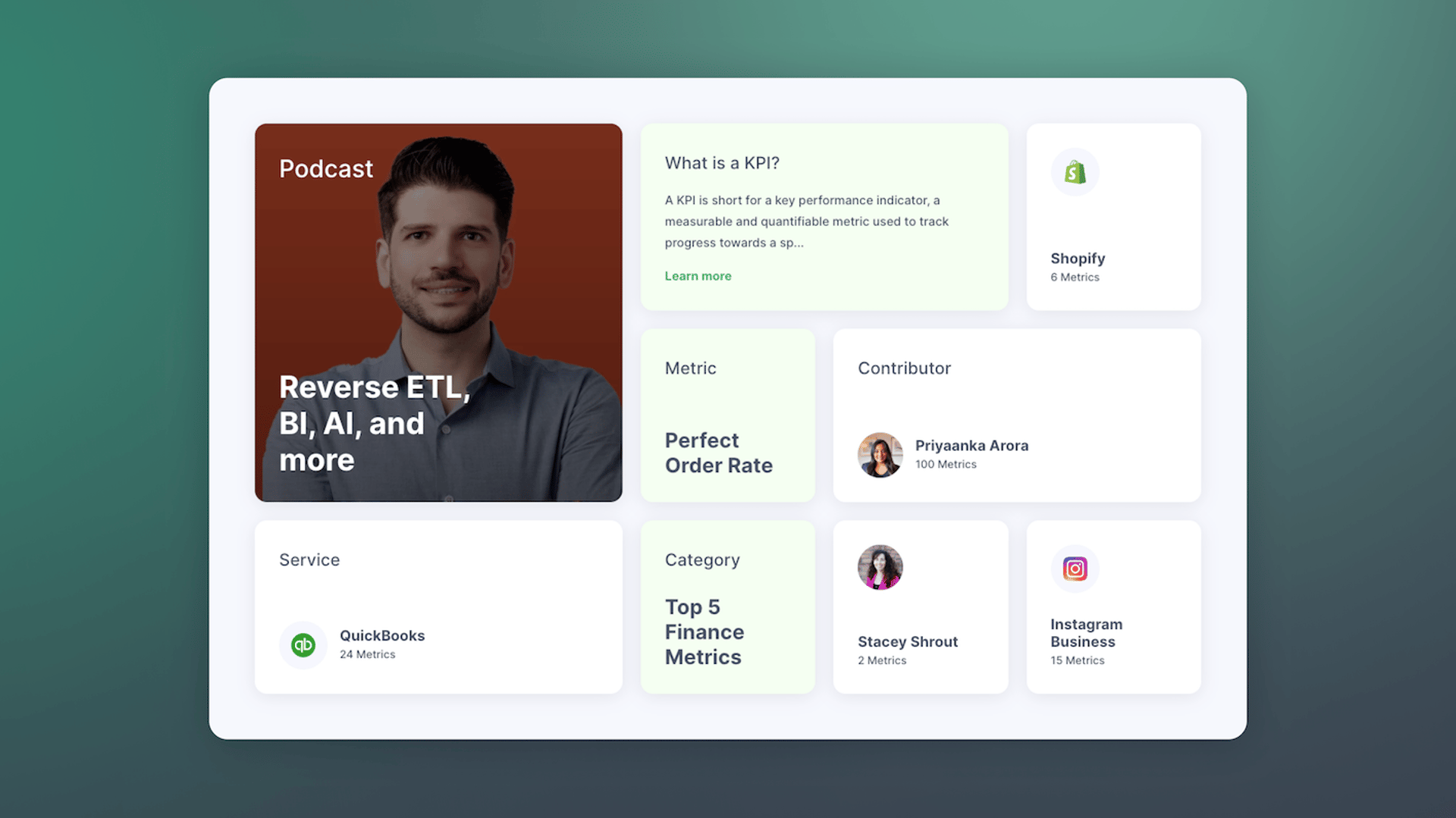The fundamentals of account-based marketing measurement

Published 2023-06-15
Summary - Account-based marketing (ABM) is a business-to-business strategy that focuses marketing efforts on specific accounts and segments, with a strong focus on targeted marketing approaches. Adopting the right measurement metrics is important no matter what field you work in. Learn about the fundamentals of account-based marketing measurement.
Adopting the right measurement metrics is important no matter what field you work in. But it’s particularly essential with account-based marketing. Select the wrong metrics, and you’ll quickly find your team chasing the wrong goals and your C-suite impatient for you to turn spending into results. ABM is a new way of doing marketing – and that’s no different when it comes to measurement. In this post, we’ll delve into what you need to consider when measuring your ABM efforts.
What is account-based marketing?
Account-based marketing (ABM) is a business-to-business strategy that focuses marketing efforts on specific accounts and segments, with a strong focus on targeted marketing approaches. Rather than trying to fill the top of the funnel with potential customers (as is the case with inbound marketing), account-based marketers focus on converting the customers that will deliver the most value to your organization.
ABM begins by defining the accounts you want to do business with first. This differs from other marketing strategies, which focus on converting customers who have already demonstrated interest in a product or service (such as by reading a blog post or signing up to receive an e-book).
ABM is known for:
- Aligning the efforts of sales and marketing in ways that aren’t possible with more “traditional” marketing campaigns
- Putting the emphasis on the quality of customers you are targeting, not the total volume of potential customers you have engaging with your business
- Featuring highly-customized campaigns that are directed not just at specific businesses but at specific people within those businesses
No, really, what is account-based marketing?
Consider it like this: Have you ever gone fishing with a net?
It can be pretty effective. But it’s not exactly the most efficient. You end up expending a lot of energy, pushing a lot of water through the net for the total number of fish you end up catching. Fishing with a spear almost reverses the equation. You spend a lot of time preparing but less effort actually catching fish. Two different methods of fishing. The first gives you volume. The second gives you precision. This, it is often said, is the difference between regular marketing and account-based marketing.
Inbound marketing is fishing with a net.
You try to cover as much water as possible. Ads, blog posts, social media – whatever it takes to get potential customers into the net. Then, in the end, you see what you’ve caught. It may not be the most precise. But, hey, it works. It just means that you may not be getting the most ideal accounts (and every once in a while, getting a junk one).
Account-based marketing, on the other hand, is fishing with a spear. You pick out the accounts you most want to target, and then you go after them. Here top-of-funnel volume isn’t as important. You want to do what you need to do to get the customers you’re targeting. It’s two different approaches to attracting customers.
And that means you need two different ways of measuring.
Why is account-based marketing so popular
ABM allows business-to-business marketing and sales teams to focus on the accounts that will deliver the most value. No more wasting time reeling in low-impact customers. With ABM, you can go after the accounts that will bring you the most revenue. But deciding to go after target accounts is just part of the equation. You also need the tools to reach them.
That’s what’s changed so much in recent years. Now marketers have the ability to accomplish two key actions:
- Learn about target accounts
- Reach those accounts with the content
Both of these are essential elements of ABM.
Once teams decide on their target accounts, they have the ability to do a deep dive into who they want to reach within those accounts. Then, once that’s been decided, they can create a personalized message designed to lure them in. And when I say personalized, I mean highly personalized.
Consider this campaign from Influitive, an advocate marketing company.
They sent target accounts a personalized package. Inside was:
- Print out a customer review of the company from the third-party site
- A handwritten note
- A physical copy of influitive's e-book
Imagine receiving something like that. Pretty persuasive, right?
That’s why ABM is so popular.
Measuring account-based marketing campaigns
You can’t just command-V your way to ABM measurement. ABM campaigns are different. It follows, then, that they should have different metrics.
Here are three reasons why ABM measurement differs from regular measurement.
The funnel is reversed.
Most of us are familiar with the traditional marketing funnel. It usually goes something like this: Attract < Nurture < Identify targets.
With ABM, the funnel is reversed.
Identification of customers doesn’t happen at the end. It happens at the beginning. You need to start with picking out the accounts that, if they become customers, are going to deliver the most value. The engaging and relationship-building? That happens afterward. It’s a totally different way to reach your customer. And it requires its own set of metrics.
Quality over quantity
Forget filling the top of the funnel with ABM. You now have a funnel of one: Your target account.
All of your marketing efforts need to be viewed through that lens.
What content is going to engage your target account? Which events are they likely to find valuable? How are you going to get their attention? You can’t just take a whole bunch of accounts you’re trying to “reel in” (getting tired of this fish analogy yet?), slap some blog posts you think they might find interesting up on your site, and hope they fill out a lead generation form.
That’s inbound, where quantity rules. ABM is different.
Say, for example, you’ve created a blog post targeted toward a particular account. With inbound, you’d probably be disappointed if you only got around 20 views. But with ABM, you’d be pretty happy with those 20 views if they all came from your target account. ABM is about quality, not quantity. Your metrics need to reflect that.
Alignment of sales and marketing
Sales and marketing metrics – like the teams they measure – frequently operate in silos. It usually goes something like this. Marketing has to churn out enough marketing-qualified leads (MQLs) to feed the sales beast. Sales need to turn enough of those into sales-qualified leads (SQLs) to churn out enough revenue for the company. And that’s, more or less, how marketing and sales have traditionally measured their efforts.
ABM is different, though. It aligns sales and marketing in ways that just aren’t done with inbound. With ABM, the marketing team’s primary unit of measurement is no longer MQLs. It’s accounts – which is exactly how the sales team has traditionally approached its job. This means that separate funnels for sales and marketing are no more. Under ABM, there is just one funnel. So no more SQLs and MQLs. ABM requires common metrics for both sales and marketing.
What you need to consider when setting your ABM KPIs
Align your metrics with your goals
I know, I know. This is Metrics 101. But with ABM, it’s particularly important.
For example, many companies use ABM less as a means of attracting new business. Instead, the goal is retention and up-selling. In this instance, for example, new accounts would be a poor KPI. Adopting that metric would send your sales and marketing teams on a wild goose chase toward a goal that has no connection at all with what you’re trying to achieve. In this instance, churn rate and recurring revenue might be better KPIs. You’ll also want to strip out most of the “vanity” metrics that dominate so many marketing campaigns. Social media followers? Toss them. Total website visitors? Forget it. Your focus is on quality. You’ll want to set KPIs that measure how effective you are at targeting individual accounts.
Focus on WHO is engaging with you
With ABM, it’s all about your target accounts.
If you’re not hitting them, then all of your ABM efforts are for naught. You’ll want to set some metrics that measure your ability to permeate your target accounts. Which companies have responded to your ABM content? The number of people within those companies. How frequently they’re engaging. That’s how you’ll be able to see how far you are getting in engaging the companies you want to convert into customers.
Adopt a robust measurement system
Measuring ABM requires more than your standard metrics. You need to have a system in place that allows you to track your success in ABM. Incorporating an executive dashboard into this system can enhance your ability to demonstrate progress to your executive team. You’ll also need to avoid some common pitfalls of measuring ABM.
For example, you might be inclined to compare your performance in ABM to your usual marketing efforts. This makes sense, but you’ll want to avoid doing this too quickly. Nearly everyone agrees that getting results from ABM takes time. If your management team is expecting to hit a giant expansion of revenue right away, your ABM initiative will likely fail. A robust measurement system helps to show the rest of the company you’re making progress. If you can show your executive team that you’re making progress with reaching key people in the accounts you’re targeting, it will go a long way toward demonstrating results – even before the revenue numbers match up with your goals. Implementing a
Why setting ABM metrics beforehand is essential
Deciding on your KPIs before starting any marketing campaign is important. This helps to communicate your goals, hold your team accountable for performance and provide a system for measuring your performance. With ABM, though? This is an absolute must.
Here’s why:
ABM results take time
Your executive team likely won’t want to hear it. But it’s important that you set the expectations with them beforehand.
ABM isn’t about quick wins. It’s about building a relationship with your target accounts over the long term. That’s why, if you’re just starting out with ABM, you’ll want to ensure everyone understands: ABM takes time. And you have to ensure everyone in your organization understands that. That’s where some well-defined KPIs can help to keep everyone on the same page. In the early days of your ABM strategy, for example, you’ll likely want to set metrics that measure how well you are engaging with your target accounts. As your campaigns progress and you start to move closer to turning those leads into customers, that’s when you’ll see results on the revenue front.
You need to incentivize the right behaviour
ABM is a relatively new way of doing marketing. You need to ensure that your team understands what ABM is and why you should be using it. The best way to do this is to set metrics beforehand. If you don’t, then your sales and marketing teams will likely be confused about what you’re using ABM for.
It aligns sales and marketing
One of the defining benefits of ABM is how it brings together efforts between the sales and marketing teams. Some sales teams might scoff at the notion of working with fewer MQLs. But the smart ones will realize that using ABM can help them make more sales – if the two teams are aligned properly. Setting KPIs and targets beforehand helps both sales and marketing teams transition to a new reality.
ABM measurement: The bottom line
ABM is different.
Your ABM measurement fundamentals need to be different too. By building your metrics from the fundamentals, you’ll set up even the most nascent ABM campaign for success.
Stay tuned for more from our 4 part ABM blog series
ABM measurement tools
Essential ABM metrics
Identifying the right ABM metrics
Related Articles

What is Product-Led Growth?
By Emily Hayward — May 12th, 2025
2025 BI and Analytics Trends for Small and Mid-Sized Businesses
By Allan Wille, Co-Founder — December 18th, 2024
Promoting data literacy with metrichq.org and the power of AI
By Allan Wille, Co-Founder — October 12th, 2023

